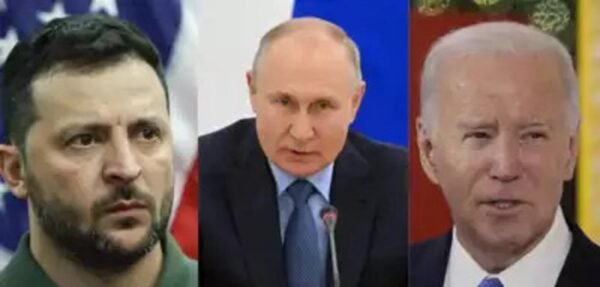Is it Start of World War 3? U.S. Ukraine and Russia
 Recent developments in the ongoing conflict between Russia and Ukraine have raised significant concerns about the potential for escalation, with some analysts warning of a possible pathway toward a broader conflict, sometimes referred to as World War III.
Recent developments in the ongoing conflict between Russia and Ukraine have raised significant concerns about the potential for escalation, with some analysts warning of a possible pathway toward a broader conflict, sometimes referred to as World War III.
The recent authorization by President Joe Biden allowing Ukraine to use U.S.-supplied long-range missiles against Russian targets has escalated tensions significantly in the ongoing conflict between Ukraine and Russia. This decision, made on November 17, 2024, marks a pivotal shift in U.S. policy, as it permits Ukraine to strike deeper into Russian territory than previously allowed. The missiles in question, known as Army Tactical Missile Systems (ATACMS), have a range of nearly 200 miles and are considered far more destructive than the types of weapons Ukraine has been using thus far.
Escalation of Conflict: The decision comes amid reports of Russia amassing troops near the Ukrainian border and launching extensive missile attacks against Ukrainian cities, resulting in civilian casualties. For instance, a recent attack in Sumy killed 11 people, including children.
Russian Response: Moscow has reacted strongly to the U.S. decision, with Russian officials warning that this could lead to World War III. They argue that allowing Ukraine to use these missiles signifies direct American involvement in the conflict. Lawmakers in Russia have characterized the move as a dangerous escalation that could provoke severe consequences.
International Reactions: While many European leaders have supported the U.S. decision, emphasizing Ukraine’s right to defend itself, critics within the U.S. express concerns that this could lead to a broader conflict involving NATO and Russia. Notably, North Korean troops have reportedly joined Russian forces, further complicating the situation.
The implications of this policy shift are profound:
Increased Military Engagement: With the ability to strike deeper into Russia, Ukraine may target critical military infrastructure, potentially altering the dynamics of the conflict significantly.
Risk of Wider War: Experts warn that this escalation could provoke a military response from Russia that might draw NATO countries into direct conflict with Russia, raising fears of a global war.
Political Context: This decision occurs just before a transition in U.S. leadership, with President-elect Donald Trump expected to take office soon. Some political commentators speculate that this move might be an attempt by the current administration to solidify support for Ukraine before Trump’s potentially less supportive stance towards Kyiv.
U.S. Policy Shift: President Joe Biden has authorized Ukraine to use American-supplied long-range missiles, specifically the Army Tactical Missile System (ATACMS), to strike deeper into Russian territory. This decision allows Ukraine to target military sites up to 300 kilometers (approximately 186 miles) into Russia, which is seen as a significant escalation in the conflict. The Kremlin has responded strongly, accusing the U.S. of direct involvement in the war and warning that this could lead to severe international repercussions.
Russian Response: Dmitry Peskov, spokesperson for the Kremlin, stated that allowing Ukraine to attack Russian territory with U.S. missiles represents a “qualitatively new escalation” and could lead to a direct confrontation involving NATO nations. Russian lawmakers have echoed these sentiments, suggesting that such actions could provoke a global conflict.
Escalating Violence: Concurrently, violence in Ukraine has intensified, with recent missile strikes by Russia resulting in civilian casualties. For example, a missile attack in Sumy killed 11 people, including children, while another assault in Odesa resulted in additional fatalities and injuries. These attacks coincide with reports of North Korean troops being deployed to support Russian military efforts, further complicating the situation.
International Reactions: The international community is closely monitoring these developments. While some Western leaders have supported Biden’s decision, others express concern about escalating tensions. French President Emmanuel Macron praised the U.S. move as beneficial for Ukraine, whereas leaders from Poland and Hungary have criticized it as dangerous.
Future Implications: As the conflict approaches its 1,000-day milestone since Russia’s full-scale invasion began in February 2022, the dynamics are shifting rapidly. With Donald Trump poised to take office again in January 2025, uncertainty surrounds future U.S. support for Ukraine, which could further impact the conflict’s trajectory.
While the authorization for Ukraine to strike deeper into Russia marks a significant shift in U.S. policy and raises the stakes of the conflict, it also invites heightened risks of escalation and broader international involvement. While the authorization for Ukraine to use long-range missiles represents a significant support measure from the U.S., it also heightens the risk of a broader conflict involving major world powers. The situation remains fluid, with both sides preparing for potential escalations in military engagement.

